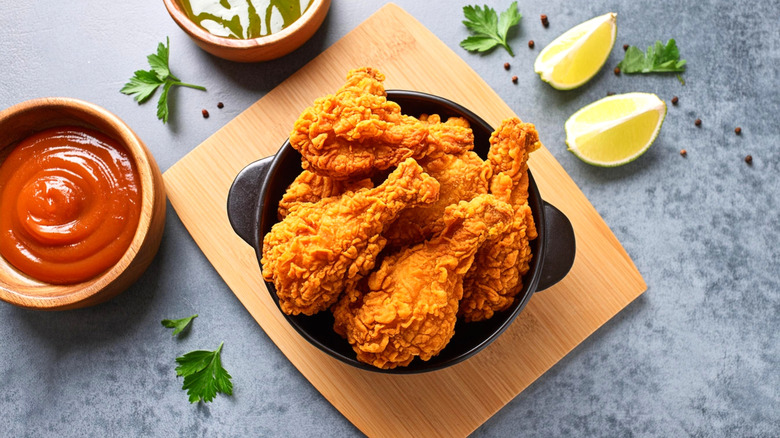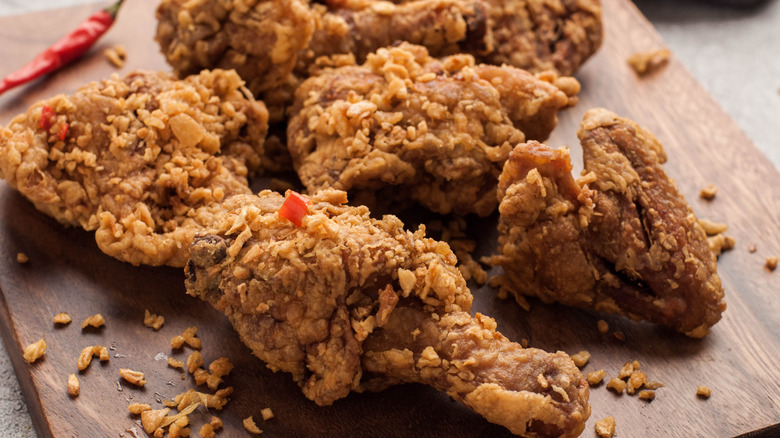Don't Miss One Key Step After Dredging Fried Chicken
Everyone and their grandma has a secret method or ingredient for making the perfect fried chicken. Though it risks dispelling some of that good old-fashioned home cooking mysticism to say so, the fact is that most run-of-the-mill fried chicken recipes have almost everything in place for absolutely anyone to fry up the most irresistibly flaky crust. The thing people often fail to do is give it adequate time.
Of course, any recipe will tell you to let the oil get hot enough, to cook the chicken for long enough, and even to let it cool for a bit before serving. But there's one critical timing window that most chicken recipes leave out: Dredging the chicken, then letting it rest for an hour before frying. Skipping this step dramatically increases the risk of a soggy, uneven fry that defeats the purpose of cooking at home rather than just picking up tenders at KFC.
Although you typically pat chicken dry before dredging, there is still moisture within the meat that the dry flour naturally draws out as you let it rest. This absorption transforms the dry layer of your dredge into a pasty medium that adheres to the chicken like epoxy (rather than just falling off in the fryer). Additionally, the surface of the coating itself dries out during that hour, leading to a far crispier crust than what soggy batter allows. Finally, the meat has time to approach room temperature, helping the oil maintain more consistent fry temperatures throughout the process.
Tips for tweaking your dredge and resting time
The rule of thumb for resting dredged chicken is one hour, but in truth not all cuts of chicken are created equal. Here are some tips to inform your experimentations in search of the fried chicken recipe.
First, consider how much moisture is in each cut of chicken. Raw white meat has higher moisture content than raw dark meat, but also loses more water after it's cooked. Thus, too much dredge or resting time can dry out your wings and breasts, making overcooking more likely. Dark cuts are fattier and thicker, and thus retain moisture better throughout the fry. They benefit from a thicker dredge and longer rest to get nice and crispy. Keep in mind that greater surface area leads to faster rates of osmosis. In plain English, cuts like wings have a lot of surface area covering relatively little meat, and dry out faster compared to denser cuts like thighs in the same amount of time.
Brining your chicken before frying it breaks down the muscle fibers, creating more room for water to seep in via osmosis. As a result, brining helps white meat (with its higher percentage of muscle tissue) resist drying out proportionally more than dark meat, leveling the playing field and making precise calculations less critical.
If this sounds overcomplicated, don't worry. That one-hour rule of thumb stands for all cuts of meat–you can't really go wrong. However, taking time to tweak and perfect your fried chicken recipe over time is what it's all about–and why grandma does it best.

